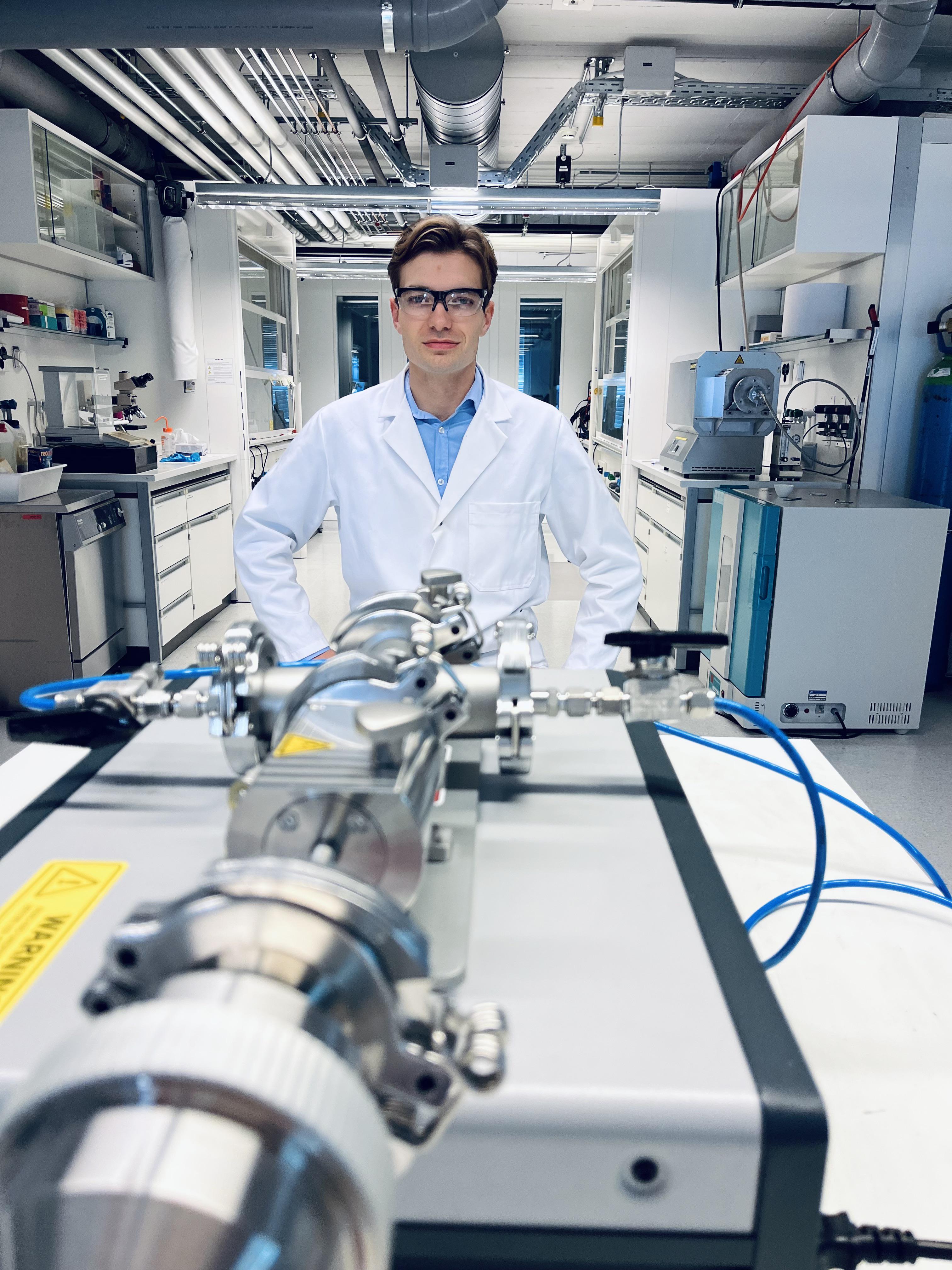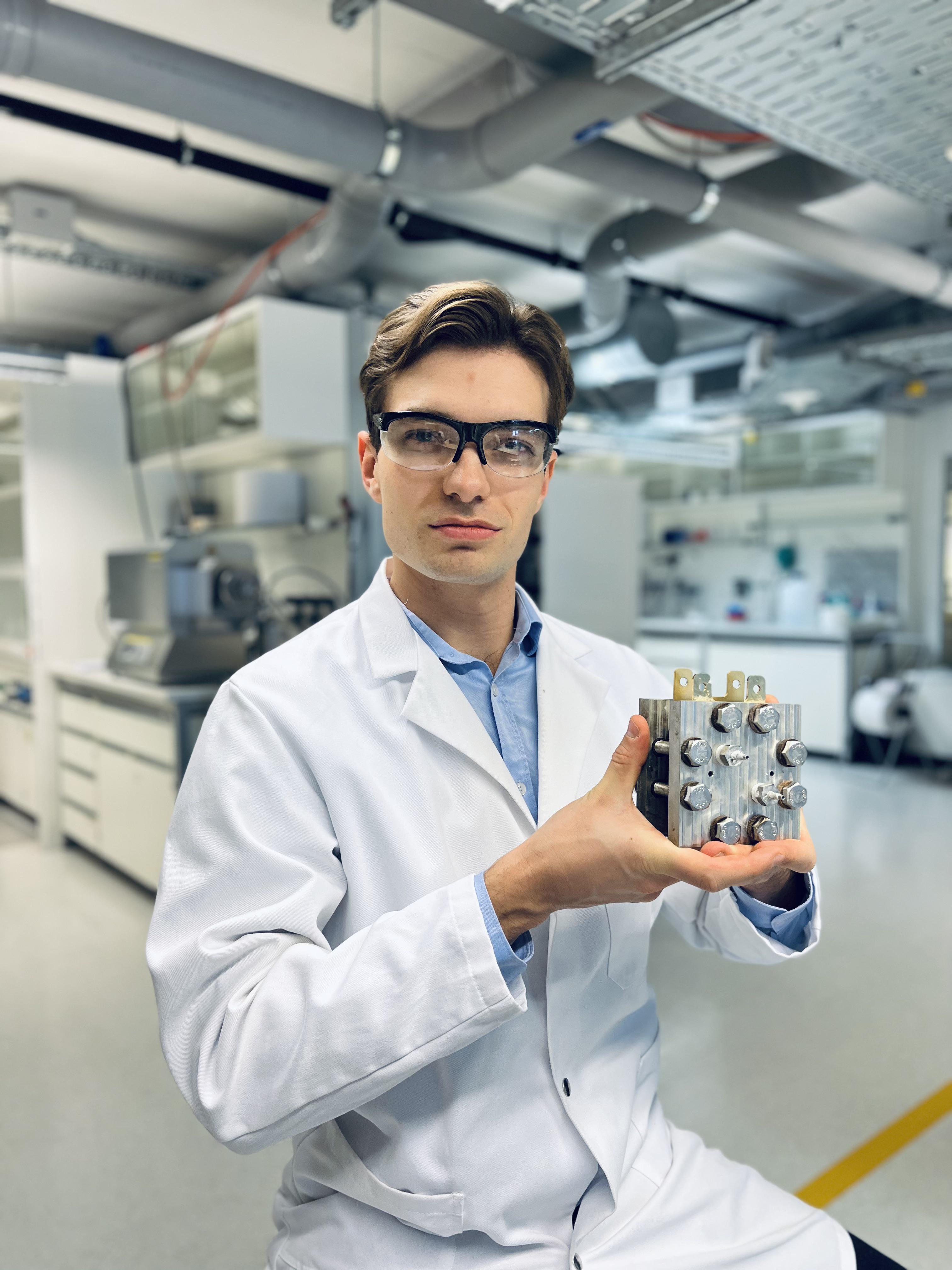
Copper-cluster catalysts on activated carbon. Credit: Cedric Koolen (EPFL)
Scientists led by EPFL, the University of Copenhagen, and Shanghai University have developed a copper catalyst that can efficiently convert carbon dioxide into acetaldehyde, a key chemical used in manufacturing. The breakthrough offers a green alternative to fossil-fuel-based processes.
Acetaldehyde is a vital chemical used in making everything from perfumes to plastics. Today, its production largely relies on ethylene, a petrochemical. But increasing environmental concerns are pushing the chemical industry to reduce its reliance on fossil fuels, so scientists have been searching for greener ways to produce acetaldehyde.
Currently, acetaldehyde is produced through the so-called "Wacker process", a chemical synthesis method that uses ethylene from oil and natural gas with other chemicals such as strong acids, i.e. hydrochloric acid. The Wacker process not only has a large carbon footprint but is resource-heavy and is unsustainable in the long run.
A promising solution to this problem is the electrochemical reduction of carbon dioxide (CO2) into useful products. As CO2 is a waste product that contributes to global warming, this approach tackles two environmental issues at once: it reduces CO2 emissions and creates valuable chemicals.
An innovative catalyst for greater efficiency
Copper-based catalysts have shown potential for this transformation, but so far, they've struggled with low selectivity - which means that they produce a mixture of products rather than the desired acetaldehyde.
Now, scientists of a public-private consortium, led by Cedric David Koolen in the group of Andreas Züttel at EPFL, Jack K. Pedersen at the University of Copenhagen, and Wen Luo at Shanghai University have developed a novel copper-based catalyst that can selectively convert CO2 into acetaldehyde with an impressive efficiency of 92%.
The breakthrough, published in Nature Synthesis, provides a greener and more sustainable way to produce acetaldehyde, and could replace the Wacker process. Moreover, the catalyst is scalable and cost-effective, opening the door for industrial applications.
"The Wacker process effectively hasn't changed in the past 60 years. It is still based on the same basic chemistry. The time was ripe for a green breakthrough," says Koolen.
"Fascinating chemistry"
The researchers began by synthesizing tiny clusters of copper particles, each about 1.6 nanometers in size, using a method called spark ablation. This technique involves vaporizing copper electrodes in an inert gas environment, and allowed the scientists to precisely control particle sizes. The copper clusters were then immobilized on carbon supports to create a stable and reusable catalyst.

In the lab, the team tested the catalyst's performance by running it through a series of electrochemical reactions with CO2 in a controlled environment. Using a synchrotron - a large scale facility that generates a very bright light source - the team ensured that the copper clusters were actively converting CO2 to acetaldehyde by a technique called X-ray absorption spectroscopy.
The results were remarkable. The copper clusters achieved 92% selectivity for acetaldehyde at a relatively low voltage, which is essential for energy efficiency. In a 30-hour stress test, the catalyst demonstrated high stability, maintaining its performance across multiple cycles. The researchers also found that the copper particles retained their metallic nature throughout the reaction, which contributes to the catalyst's longevity.
"What was really surprising to us was that the copper remained metallic, even after removal of the potential and exposure to air," says co-lead author Wen Luo. ". "Copper usually oxidizes like crazy, especially copper that small. But in our case, an oxide shell formed around the cluster protecting the core from further oxidation. And this explains the recyclability of the material. Fascinating chemistry."

The keys to success
Why did the new catalyst work so well? Computational simulations showed that the copper clusters feature a specific configuration of atoms that promotes CO2 molecules to bond and transform in a way that favors the production of acetaldehyde over other possible products, like ethanol or methane.
"The great thing about our process is the fact that it can be applied to any other catalysts system," says co-lead author Jack K. Pedersen. "With our computational framework, we can quickly screen clusters for promising characteristics. If it's for CO2 reduction, or water electrolysis, with spark ablation we can produce the new material with ease and directly test it in the lab. This is so much faster than your typical test-learn-repeat cycle."
The new copper catalyst is a significant step toward greener industrial chemistry. If scaled up, it could replace the Wacker process, reducing the need for petrochemicals and cutting down on CO2 emissions. Since acetaldehyde is a building block for many other chemicals, this research has the potential to transform multiple industries, from pharmaceuticals to agriculture.
This research is also featured as a Research Briefing on Nature Synthesis.
Other contributors
- Empa Materials Science & Technology
- University of Copenhagen
- VSPARTICLE
- Paul Scherrer Institute, Switzerland
- EPFL Environmental Engineering Institute
- Technical University of Delft
- Shanghai University






